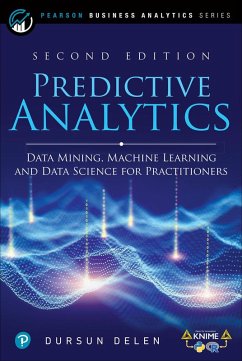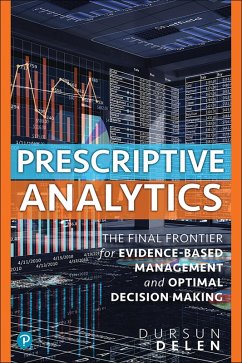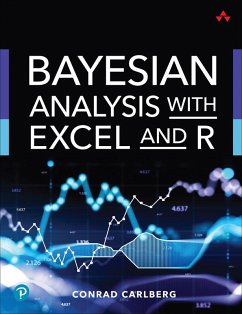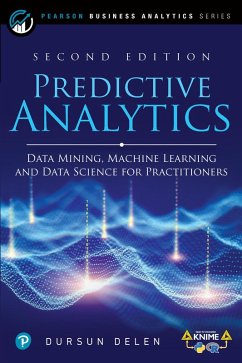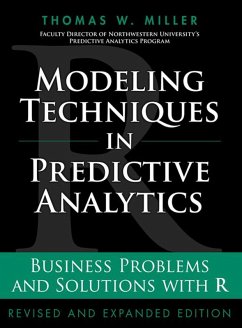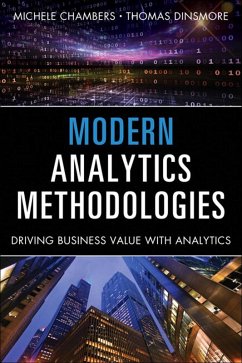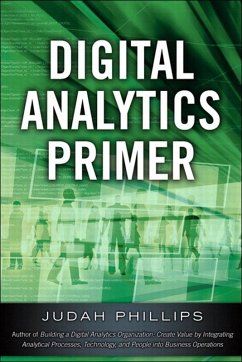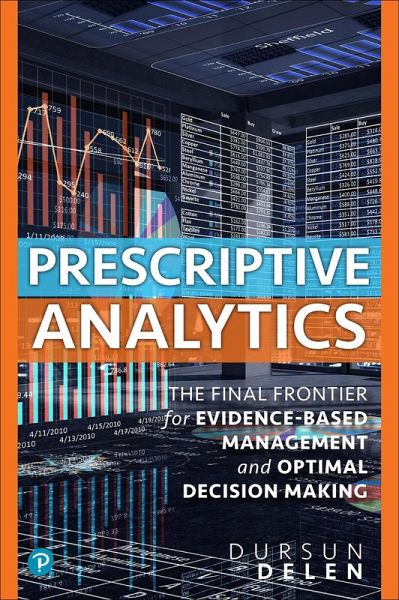
Prescriptive Analytics (eBook, ePUB)
The Final Frontier for Evidence-Based Management and Optimal Decision Making

PAYBACK Punkte
14 °P sammeln!
Make Better Decisions, Leverage New Opportunities, and Automate Decisioning at ScalePrescriptive analytics is more directly linked to successful decision-making than any other form of business analytics. It can help you systematically sort through your choices to optimize decisions, respond to new opportunities and risks with precision, and continually reflect new information into your decisioning process. In Prescriptive Analytics, analytics expert Dr. Dursun Delen illuminates the field's state-of-the-art methods, offering holistic insight for both professionals and students. Delen's end-to-...
Make Better Decisions, Leverage New Opportunities, and Automate Decisioning at Scale
Prescriptive analytics is more directly linked to successful decision-making than any other form of business analytics. It can help you systematically sort through your choices to optimize decisions, respond to new opportunities and risks with precision, and continually reflect new information into your decisioning process.
Prescriptive analytics is more directly linked to successful decision-making than any other form of business analytics. It can help you systematically sort through your choices to optimize decisions, respond to new opportunities and risks with precision, and continually reflect new information into your decisioning process.
In Prescriptive Analytics, analytics expert Dr. Dursun Delen illuminates the field's state-of-the-art methods, offering holistic insight for both professionals and students. Delen's end-to-end, all-inclusive approach covers optimization, simulation, multi-criteria decision-making methods, inference- and heuristic-based decisioning, and more. Balancing theory and practice, he presents intuitive conceptual illustrations, realistic example problems, and real-world case studies-all designed to deliver knowledge you can use.
- Discover where prescriptive analytics fits and how it improves decision-making
- Identify optimal solutions for achieving an objective within real-world constraints
- Analyze complex systems via Monte-Carlo, discrete, and continuous simulations
- Apply powerful multi-criteria decision-making and mature expert systems and case-based reasoning
- Preview emerging techniques based on deep learning and cognitive computing
Dieser Download kann aus rechtlichen Gründen nur mit Rechnungsadresse in A, B, BG, CY, CZ, D, DK, EW, E, FIN, F, GR, HR, H, IRL, I, LT, L, LR, M, NL, PL, P, R, S, SLO, SK ausgeliefert werden.




